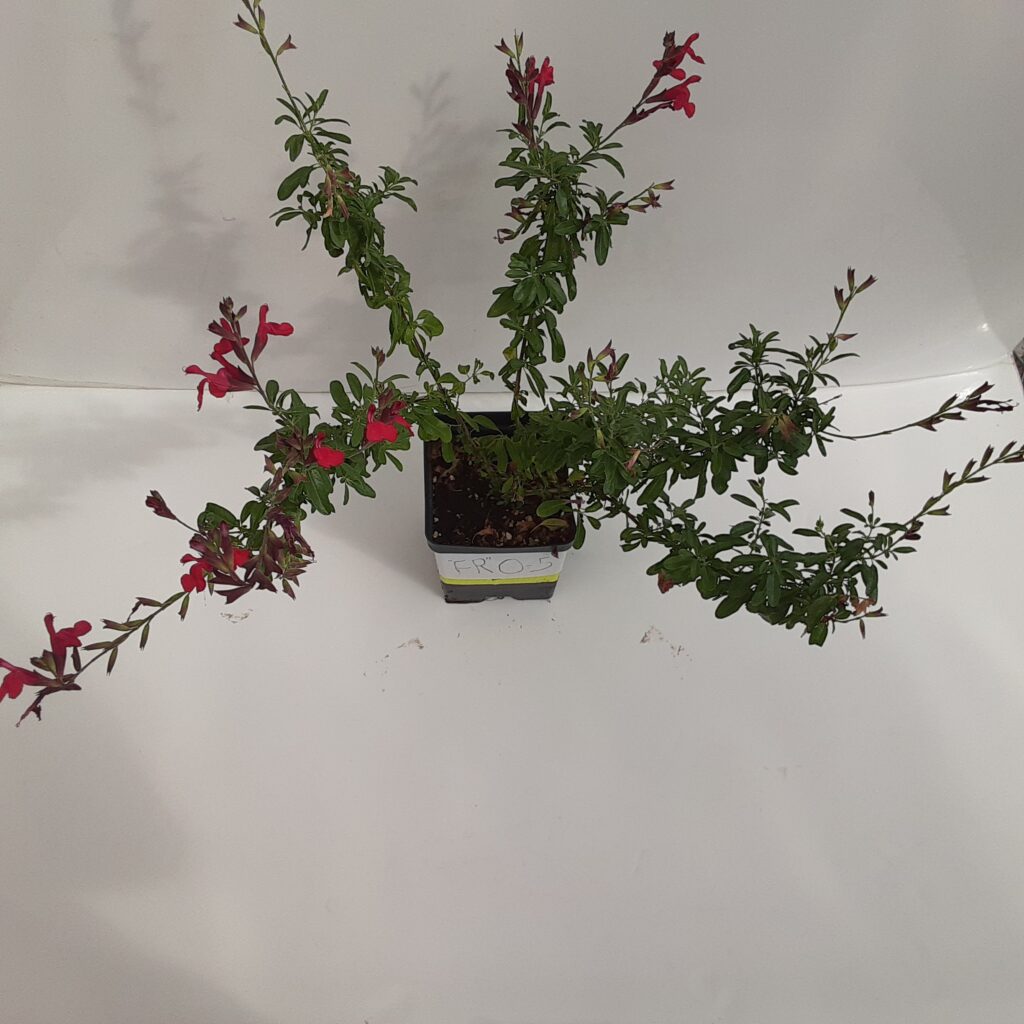Obtaining enough vegetative cuttings from some desirable ornamental taxa can be challenging, especially for taxa that flower over a long period of time. Examples include ORANGE CARPET® hummingbird trumpet, Epilobium canum subsp. garrettii ‘PWWG01S’, and Furman’s red sage, Salvia greggii ‘Furman’s Red.’ One way to suppress reproductive growth and get the juvenile growth needed for high quality vegetative cuttings, is to repeatedly cut back stock plants. The objective of this study was to investigate how the length of chilling periods affect suppression of reproductive growth in ORANGE CARPET® hummingbird trumpet and Furman’s red sage.


Methods
Plugs of ORANGE CARPET® hummingbird trumpet were grown in #1 trade nursery containers filled with Berger BM 6 HD growing medium. Plugs of Furman’s red sage were grown in 4” square pots filled with Berger BM6 HD growing medium. Stock plants were grown on a greenhouse bench where daily ambient air temperatures ranged between 65°F and 75°F and under natural daylight with no supplemental lighting. After 8 weeks all plants were cutback to approximately 4 inches.
Ten containers were left on the greenhouse bench (0 weeks of chilling). The remaining 40 containers placed in a walk-in cooler at 38-39°F – 10 containers for 2 weeks, 10 for 4 weeks, 10 for 6 weeks, and 10 remained in the cooler for 8 weeks. No light was provided to plants while in the cooler. At 2-week intervals, 10 containers were removed from the cooler and placed on a greenhouse bench, where daily ambient air temperatures ranged between 65°F and 75°F and under natural daylight with no supplemental light. After removal from the cooler, containers were watered when needed with 20-10-20 at 100 ppm nitrogen (N). Plants were monitored weekly for the presence of reproductive growth. At the conclusion of Experiment #1, Experiment #2 was initiated.
Results
Two experiments were conducted for each plant.
For ORANGE CARPET® hummingbird trumpet, Experiment #1 was conducted from June 2022 to September 2022. The plants receiving zero weeks of chilling remained vegetative for only two weeks but when given six or eight weeks of chilling they remained vegetative for four weeks. In the second experiment, conducted from November 2022 to March 2023, plants given four weeks of chilling remained vegetative for six weeks and those given eight weeks of chilling, plants remained vegetative for seven weeks.
Concerning Furman’s red sage, Experiment #1 was conducted from December 2022 to February 2023 and Experiment #2 from April 2023 to June 2023. Chilling periods did not appear to delay reproductive growth during the winter (Dec-Feb) or spring (April-June) experiments.
Conclusions
Stock plants of ORANGE CARPET® hummingbird trumpet grown in the fall, when the number of hours of daylight was decreasing (Experiment #2) suppressed development of reproductive growth longer than did stock plants grown in the spring, when the number of hours of daylight was increasing (Experiment #1). Based on the results of this study, stock plants grown after the fall equinox (Sept. 21) and before the winter solstice (Dec. 21) are more likely to produce juvenile growth for a longer period of time, extending the time during which vegetative cuttings can be harvested (and probably the number of cuttings harvested).
Stock plants of Furman’s red sage grown after the spring equinox (March 21), when the number of hours of daylight was greater than 12 hours (Experiment #2) suppressed development of reproductive growth longer than did stock plants grown in the winter, when the number of hours of daylight was less than 12 hours (Experiment #1). Based on the results of this study, stock plants grown after the spring equinox (March 21) and prior to the summer solstice (June 21) are more likely to produce juvenile growth for a longer period of time, extending the time during which vegetative cuttings can be harvested (and probably the number of cuttings harvested). The benefit of chilling varied among the plant taxa. For stock plants of ORANGE CARPET® hummingbird trumpet grown spring through summer, chilling for 6 weeks delayed reproductive growth 2 weeks no than the non-chilled plants. However, for stock plants grown fall through winter, chilling did not delay reproductive growth when chilled plants were compared with non-chilled plants. For stock plants of Furman’s red sage, regardless of the time of year the plants were grown, chilling did not delay reproductive growth when chilled plants were compared with non-chilled plants.










